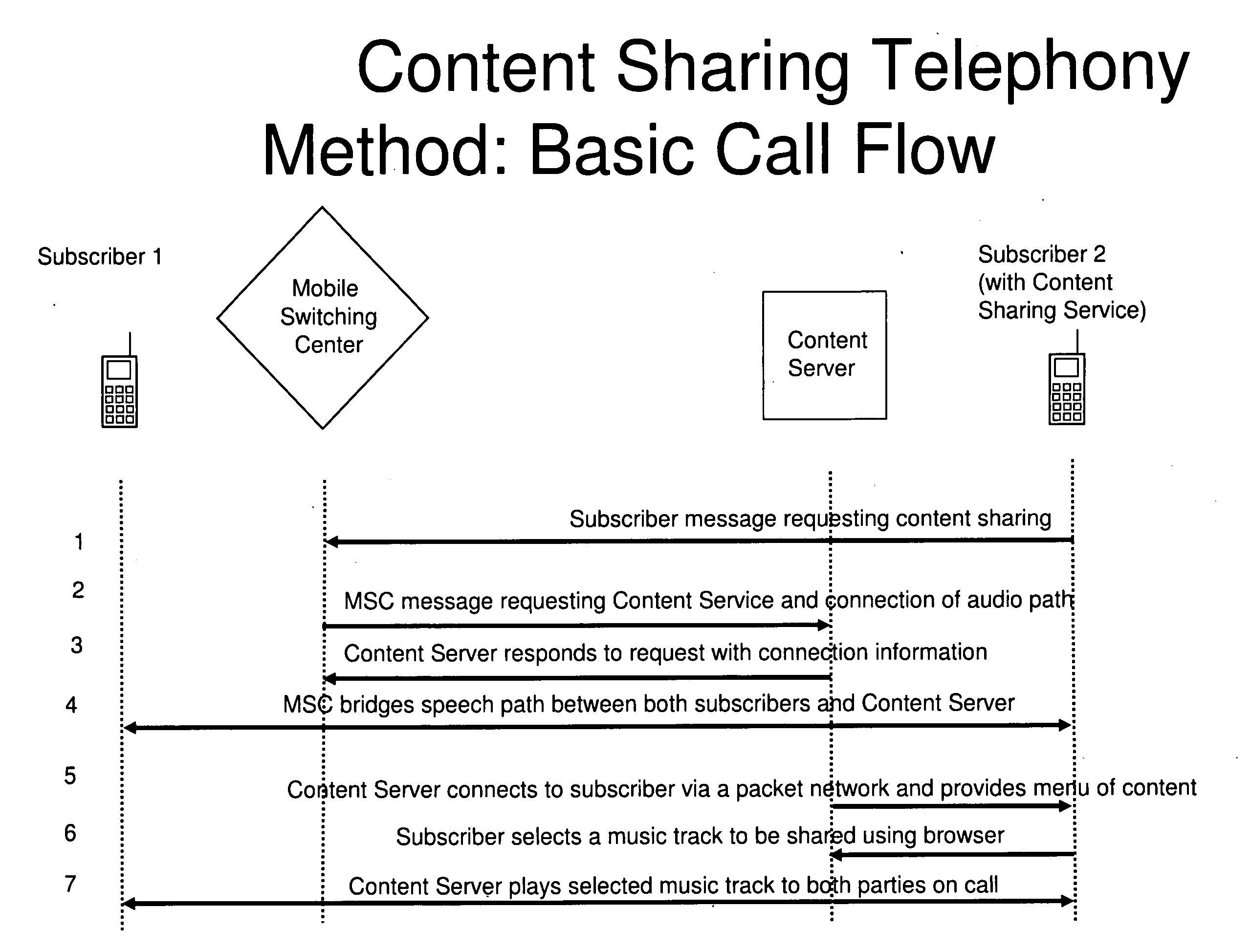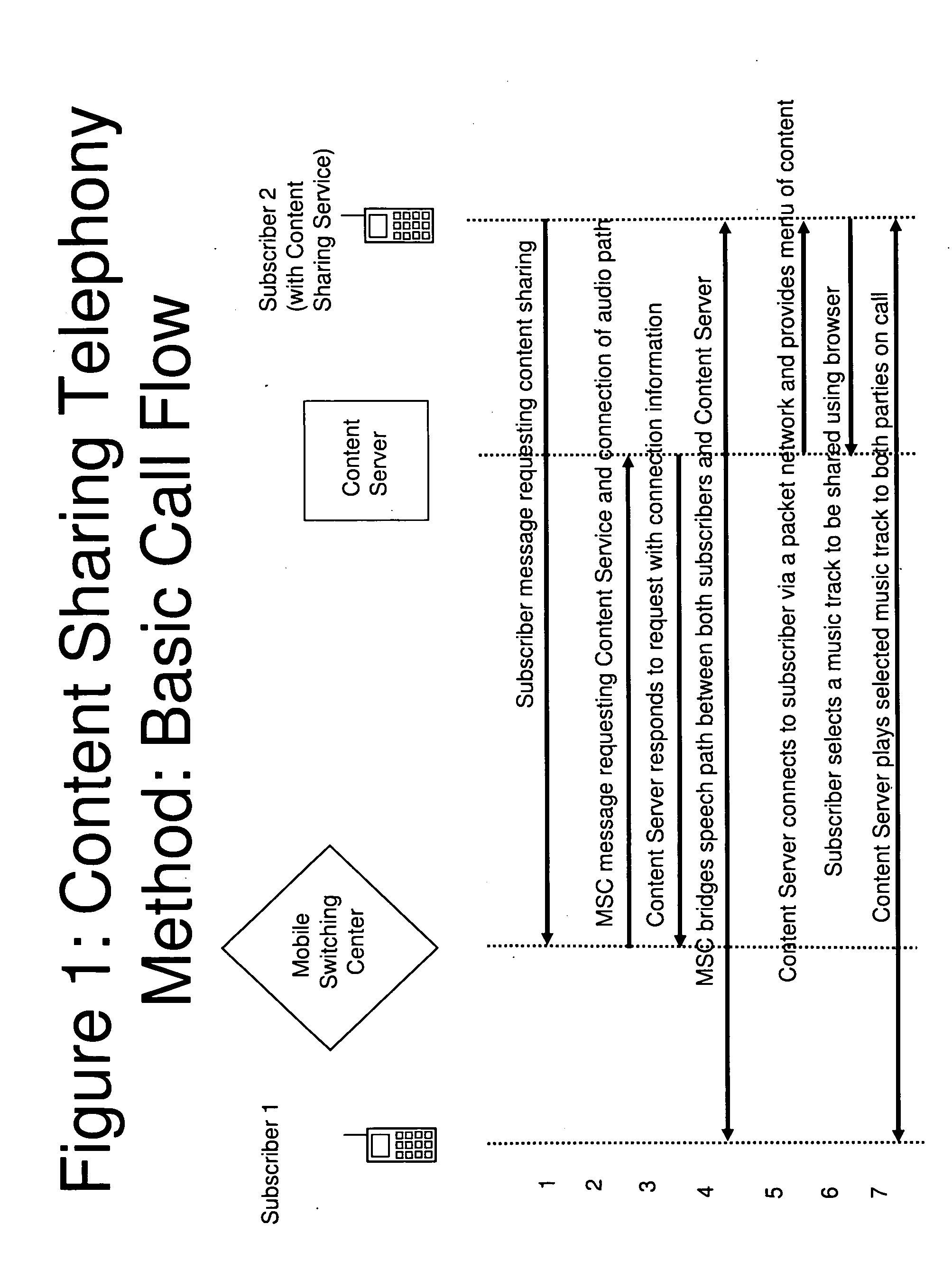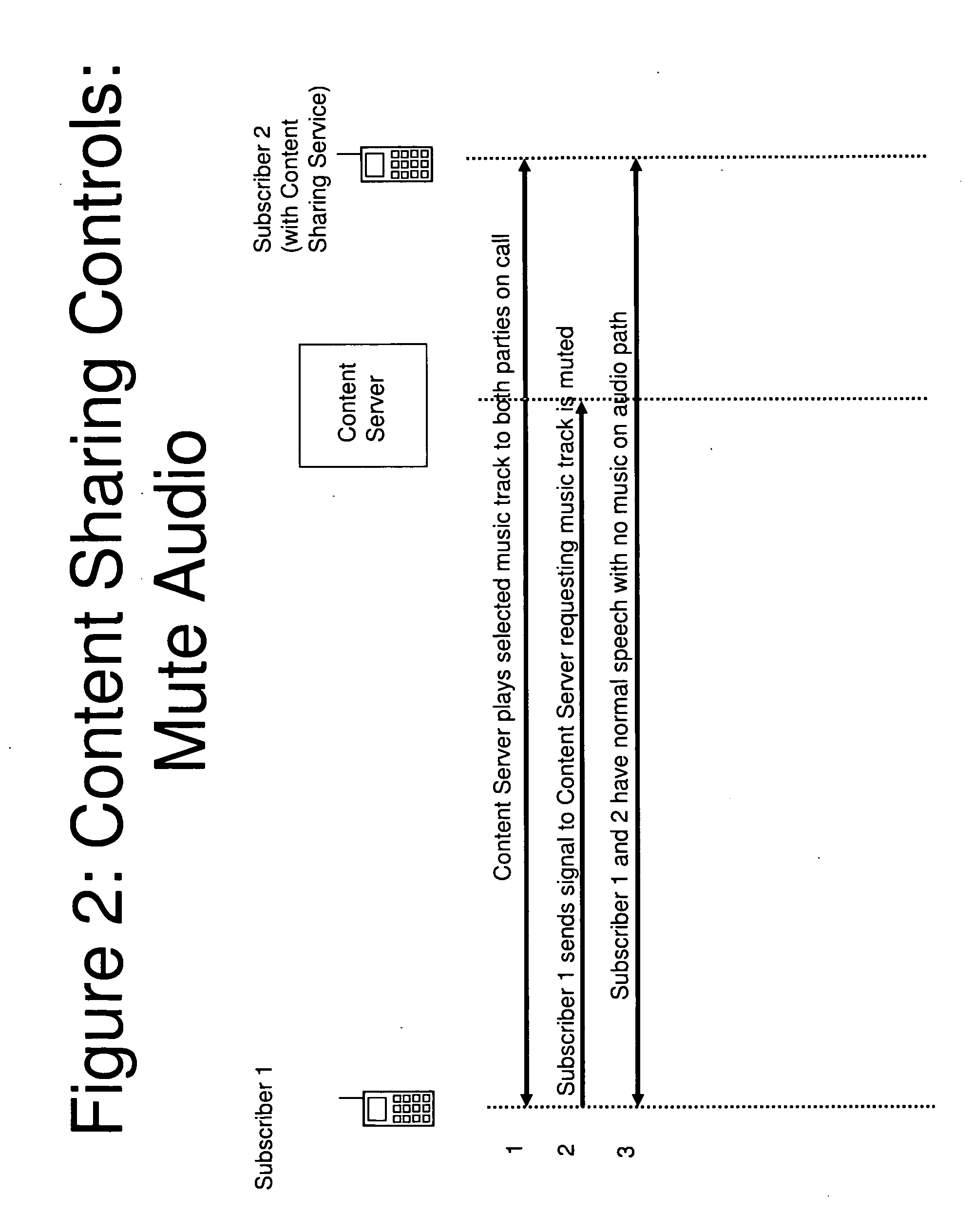Method for Sharing Audio-only content, Audio-Visual content, and Visual-only content between Subscribers on a Telephone call
a technology of audio-only content and audio-visual content, applied in the field of telephone communication, can solve the problems of not being able to directly control the back tone service, no opportunity for a shared experience, and the subscriber's inability to select audio content, so as to achieve the effect of better control of the content provided
- Summary
- Abstract
- Description
- Claims
- Application Information
AI Technical Summary
Benefits of technology
Problems solved by technology
Method used
Image
Examples
Embodiment Construction
[0048]In FIG. 1, the invention starts after a telephone Call is in a talking state between Subscriber 1 and Subscriber 2. In this Content Sharing Call Flow, a Mobile Telephony network is displayed where both subscribers on the call are hosted by the same Mobile Switching Center (MSC). The Content Sharing service would equally work if the subscribers were on different switches the only difference being extra call signaling to establish a physical speech path set-up between the various telephony network elements involved in the telephone call. Not shown is the regular mobile telephony call set-up which includes the MSC sending a message to the Home Location Register (HLR) to obtain the Subscribers profile which, in this scenario, includes information about the Content Sharing service. Note that the Content Sharing service could equally work in Wireline telephones. In a Wireline network, no HLR or MSC would be involved. The Wireline telephone switch hosting the call for subscriber with...
PUM
 Login to View More
Login to View More Abstract
Description
Claims
Application Information
 Login to View More
Login to View More - R&D
- Intellectual Property
- Life Sciences
- Materials
- Tech Scout
- Unparalleled Data Quality
- Higher Quality Content
- 60% Fewer Hallucinations
Browse by: Latest US Patents, China's latest patents, Technical Efficacy Thesaurus, Application Domain, Technology Topic, Popular Technical Reports.
© 2025 PatSnap. All rights reserved.Legal|Privacy policy|Modern Slavery Act Transparency Statement|Sitemap|About US| Contact US: help@patsnap.com



